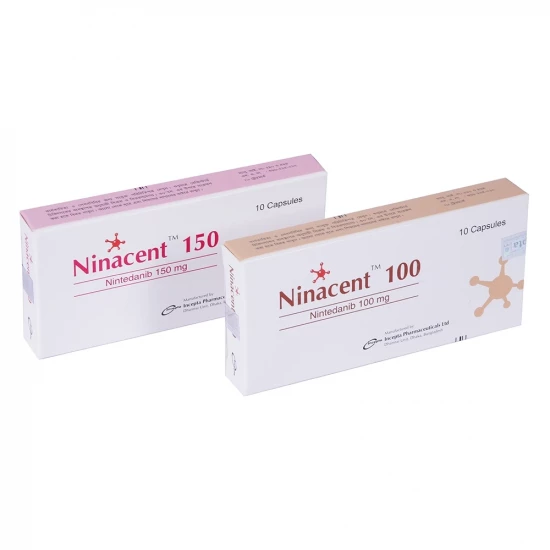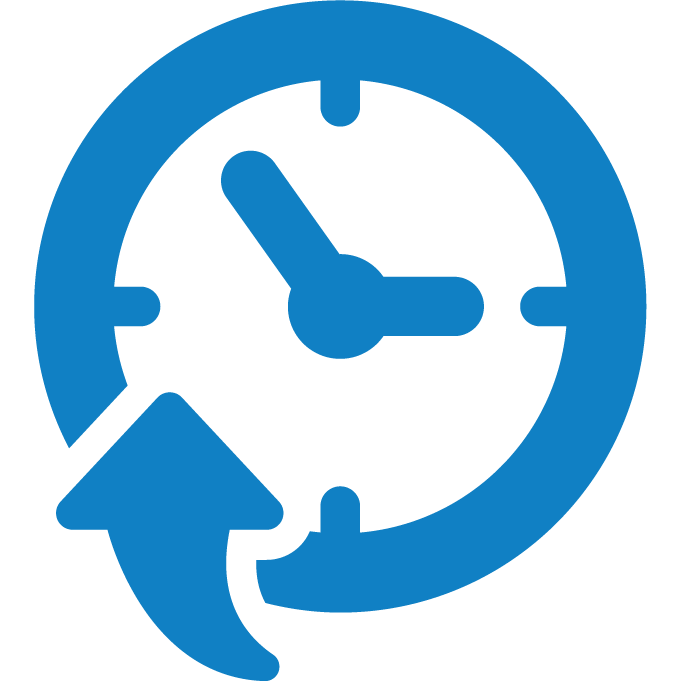
✔ 100% Authentic Product
👁️ Currently Viewing 1067
Ninacent 150 | 10 Capsules
Ninacent is prescribed for adults in the treatment of:
- Idiopathic Pulmonary Fibrosis (IPF)
- Chronic fibrosing interstitial lung diseases (ILDs) with a progressive phenotype
- Systemic sclerosis-associated interstitial lung disease (SSc-ILD)
Locally advanced, metastatic, or recurrent non-small cell lung cancer (NSCLC) of adenocarcinoma histology, in combination with docetaxel, following first-line chemotherapy
Discount
Price: ৳ 3,430
MRP:
৳
3500
2%
Off

100% Genuine Products, Guaranteed

Safe & Secure Payments, Always

Fast, Secure & Efficient Delivery

Proper Packaging
 Cash on Delivery - All over Bangladesh
Cash on Delivery - All over Bangladesh Regular Delivery - 12-24 Hours, Dhaka City* Charge Tk.39-59
Regular Delivery - 12-24 Hours, Dhaka City* Charge Tk.39-59 Regular Delivery - 24-48 Hours, Other Cities* Charge Tk.99-110
Regular Delivery - 24-48 Hours, Other Cities* Charge Tk.99-110
 ফ্রি ডেলিভারিঃ - ৯৯৯ টাকা+ অর্ডারে, ঢাকা
শহরে
ফ্রি ডেলিভারিঃ - ৯৯৯ টাকা+ অর্ডারে, ঢাকা
শহরে ফ্রি ডেলিভারিঃ - ২৯৯৯ টাকা+ অর্ডারে, ঢাকার
বাহিরে
ফ্রি ডেলিভারিঃ - ২৯৯৯ টাকা+ অর্ডারে, ঢাকার
বাহিরে
100% Genuine Products, Guaranteed
Safe & Secure Payments, Always
Fast, Secure & Efficient Delivery
Proper Packaging
 Cash on Delivery - All over Bangladesh
Cash on Delivery - All over Bangladesh Regular Delivery - 12-24 Hours, Dhaka City* Charge Tk.39-59
Regular Delivery - 12-24 Hours, Dhaka City* Charge Tk.39-59 Regular Delivery - 24-48 Hours, Other Cities* Charge Tk.99-110
Regular Delivery - 24-48 Hours, Other Cities* Charge Tk.99-110 ফ্রি ডেলিভারিঃ - ৯৯৯ টাকা+ অর্ডারে, ঢাকা
শহরে
ফ্রি ডেলিভারিঃ - ৯৯৯ টাকা+ অর্ডারে, ঢাকা
শহরে ফ্রি ডেলিভারিঃ - ২৯৯৯ টাকা+ অর্ডারে, ঢাকার
বাহিরে
ফ্রি ডেলিভারিঃ - ২৯৯৯ টাকা+ অর্ডারে, ঢাকার
বাহিরে
✅ Description:
Nintedanib is a multi-targeted tyrosine kinase inhibitor that blocks the activity of several receptor and non-receptor tyrosine kinases implicated in fibrosis and tumor progression.
It competitively inhibits receptors such as:
PDGFR-α/β (platelet-derived growth factor receptors)
FGFR 1–3 (fibroblast growth factor receptors)
VEGFR (vascular endothelial growth factor receptors)
FLT3, Lck, Lyn, and Src
By binding to the ATP-binding sites of these receptors, Nintedanib disrupts downstream pathways responsible for:
Fibroblast proliferation and migration
Angiogenesis in tumors
Progression of pulmonary fibrosis
✔️ Use in Special Populations
- Pregnancy: Contraindicated. May cause fetal harm. Use contraception during and for 3 months after treatment.
- Lactation: Not recommended. Unknown if excreted in human milk.
- Fertility: No impairment observed in males; data in females limited
- Children: Safety and efficacy not established
- Elderly (≥65 years): No dose adjustment needed, but monitor closely
- Renal impairment: No dose adjustment in mild/moderate cases; not studied in severe impairment
Hepatic impairment:
- Mild (Child Pugh A): 100 mg twice daily recommended
- Moderate to severe (Child Pugh B/C): Use not recommended
✔️ Dosage & Administration
For IPF, ILDs & SSc-ILD:
- Recommended dose: 150 mg twice daily (approximately 12 hours apart)
- If not tolerated: 100 mg twice daily
- Missed dose: Skip and resume at the next scheduled time. Do not double-dose.
- Maximum daily dose: 300 mg
For NSCLC (with Docetaxel):
200 mg twice daily on Days 2 to 21 of a 21-day treatment cycle
Do not take Ninacent on Day 1 (docetaxel administration day)
Continue Ninacent alone after docetaxel if clinical benefit persists
Maximum daily dose: 400 mg
Capsules should be taken orally with food, swallowed whole (not chewed/crushed), with water.
Dose Adjustment Guidelines
In case of side effects:
Reduce dose to 100 mg twice daily
Interrupt therapy if liver enzymes exceed 3× ULN; resume at a lower dose once normalized
Discontinue permanently if 100 mg twice daily is not tolerated
✔️ Common Side Effects
- Very common (≥1/10): Diarrhea, nausea, vomiting, abdominal pain, loss of appetite, weight loss, elevated liver enzymes
- Common (≥1/100 to <1/10): Bleeding, hypertension, rash
- Uncommon to rare: GI perforation, thromboembolic events, liver injury
✔️ Drug Interactions
P-glycoprotein (P-gp): Nintedanib is a substrate.
Inhibitors (e.g., ketoconazole, erythromycin): ↑ drug levels—monitor closely
Inducers (e.g., rifampicin, phenytoin): ↓ effectiveness—avoid if possible
CYP Enzymes: Minimal metabolism via CYP pathways—low risk of CYP-mediated interactions
Hormonal contraceptives: Interaction not studied; use barrier methods as backup contraception
✔️ Contraindications
Known hypersensitivity to Nintedanib, peanuts, soy, or any excipients
✔️ Special Warnings & Precautions
- Diarrhea: Most common side effect. Treat early with hydration and antidiarrheals (e.g., loperamide).
- Nausea/Vomiting: If persistent, consider dose adjustment or temporary discontinuation
Liver Function:
Monitor ALT, AST, bilirubin prior to treatment and regularly during first 3 months
Higher risk in: Females, elderly, Asians, low body weight (<65kg)
Dose reduce or interrupt if transaminases >3x ULN
- Renal Function: Monitor in at-risk patients; rare cases of renal failure reported
- Bleeding Risk: Caution in patients on full anticoagulation or with bleeding tendencies
- Arterial Thromboembolism: Monitor in patients with cardiovascular risks
- Gastrointestinal Perforation: Rare, but serious. Avoid in patients with GI disorders or recent surgery
Hypertension: Monitor BP regularly
- Wound Healing: Delay therapy initiation after surgery until adequate healing
- QT Prolongation Risk: Low, but exercise caution in susceptible individuals
- Soya/Peanut Allergy: Contraindicated due to excipient content
✔️ Storage Conditions
Store in a cool, dry place, protected from light.
Do not store above 25°C.
Keep out of reach of children.
⚠️Disclaimer:
At ePharma, we’re committed to providing accurate and accessible health information. However, all content is intended for informational purposes only and should not replace medical advice from a qualified physician. Please consult your healthcare provider for personalized guidance. We aim to support, not substitute, the doctor-patient relationship.






